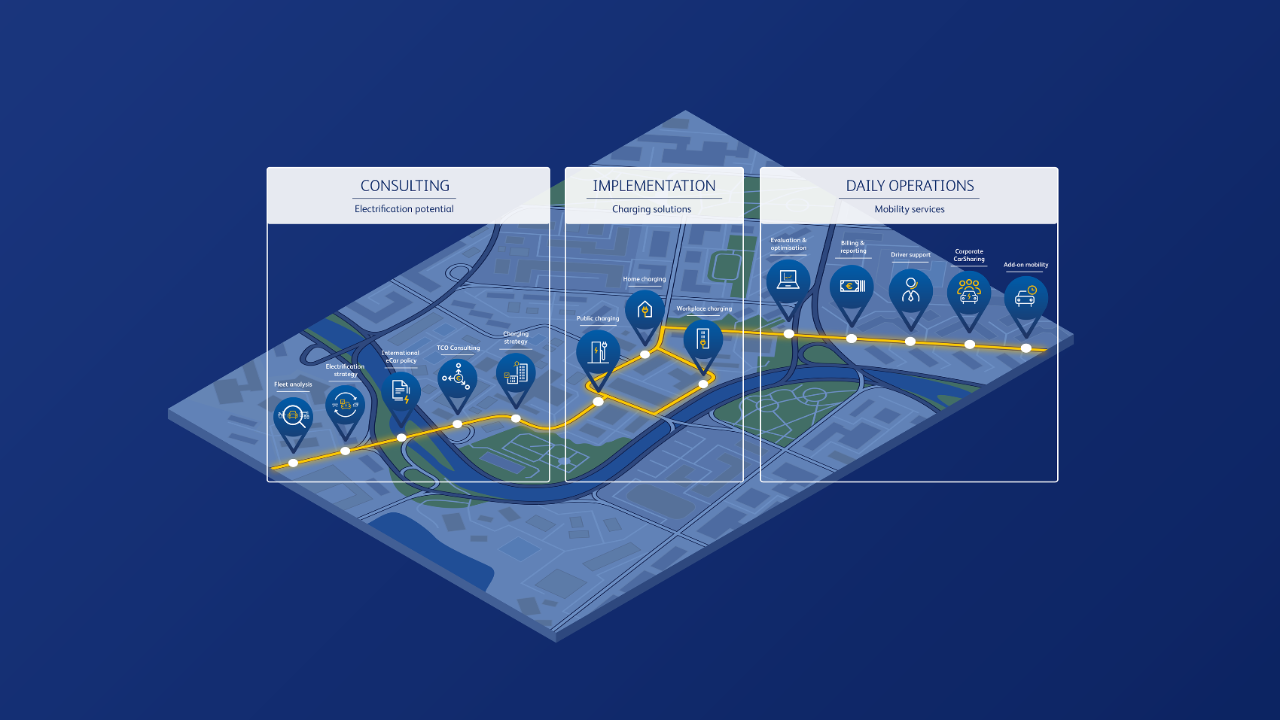How can you prepare your fleet?
Before any decision can be taken on EV adoption, three key areas need to be considered:
- The needs of your business
- The needs of your employees
- The challenges of the supply chain
Starting with the last of those challenges, supply issues with vehicles of all kinds have been apparent for some time. High demand, long waiting lists and product delays need to be considered, especially for vehicles like Light Commercial Vehicles (LCVs), which have historically suffered from some of the longest delays. It’s important to think about what vehicles suit your business’ needs and how long you might have to wait to get them. Considering the age of your current fleet is also important, as it could take some time before they can be replaced, risking fleet downtime. That said, we’re seeing a shift now and lead times are coming down. So, it's not all doom and gloom.
When it comes to the needs of employees and your business, it’s important to remember that not everyone has the same requirements. You might benefit from a mixture of vehicles, with different battery sizes, ranges and weight limits, in order to work most efficiently.
Some companies choose to use a blend of plug-in hybrid electric vehicles (PHEVs) and battery electric vehicles (BEVs) to ease the transition. This allows drivers to get used to the differences between EVs and the vehicles they have previously been accustomed to (especially where they don’t currently have easy access to charging points and tend to cover long distances).
Investigating key factors for individuals, such as their own access to charging, the costs of charging or their trip patterns can help you paint a more accurate travel picture and allocate the right vehicle for them. You could use telematics on existing vehicles to obtain this data or, more simply, use driver surveys or fuel expenses as a reference.
And finally, it’s key to remember that the total cost of EV ownership needs to be considered. Yes, they can be more expensive to buy or lease upfront than their petrol or diesel counterparts. But fuel and energy costs are getting closer all the time. What’s more, maintenance costs should be lower, in addition to the tax efficiencies for both employer and employee. So, with the right level of due diligence when making the choice, this can quickly add up to save your business money over the lifespan of the vehicle.
What policy changes do you need to know about?
With a different type of vehicle comes a new range of challenges to tackle for those responsible for managing a fleet. There are different aspects of entitlement which need to be considered, such as managing reimbursement for business miles, as well as the funding of charge points, access to charge points at work and so on.
First off, vehicle choice lists need to change. If you run a fixed list, you may need to change descriptions of the vehicle types available at each grade of entitlement in your policy documents. This will help employees recognise the different vehicle types available to them. We can support you in reviewing your choice list reviews to suit changing requirements.
It’s also important to highlight any consequences of misuse. For example, if a driver pushes their vehicle too far and runs out of charge, they will require a costly and wholly avoidable recovery. You may choose to deduct this cost from the driver. It’s also good to stress the importance of looking after charging cables, as these will need to be returned with the car, just like locking wheel nuts or puncture repair kits.
Next, consider your policy for home chargers. Will you choose to fund some, all or none of the cost? Some employers choose to pay for the standard installation costs of home chargers, while others provide an element of reimbursement, or no support at all. If that’s the case, you may instead decide to offer a company to partner with to make the transition smoother. Our team are available to assist with all of these options, so you can find the perfect fit for your organisation.
Finally, it’s worth considering AER, HMRC’s ‘Advisory Electric Rate’, comparable to fuel expense rates. At the time of writing, this is estimated at 10p per mile, making it much cheaper than other fuel types, so it’s important to consider whether this’ll be good value for your business and your employees. This figure is updated regularly, so check back for updated costs here.
Advisory Electric Rates will generally cover costs for those who charge at home on a good tariff, or if workplace charging is readily available. For those who are solely reliant upon the public charging network, they can expect higher average costs per mile and you (company/employer) may want to explore methods to reimburse in line with the actual costs rather than a set rate. For more guidance on this topic, please contact a member of our team and we’d be more than happy to help.

What about charging strategies?
Range and charging anxiety are both key concerns for EV owners, ‘on-the-fencers’ and sceptics. But for the majority of daily use cases, they needn’t be.
If you have the ability to charge your fleet of vehicles when they’re not being used, either at home or at a place of work, you can easily mitigate most charging concerns.
However, anyone who does very high mileage, or doesn’t have the option to charge at home or work, needs to assess the impact an EV could have on them. For many, there will still be a strong case for switching, but for some there will be adjustment and planning required to ensure charging does not become an inconvenience.
It’s also important to factor battery health into charging considerations. While DC rapid charging on motorways is convenient, it’s expensive compared to home wallbox charging, particularly when overnight tariffs are taken into consideration. It’s also not ideal for the long-term health of the battery. While they’re increasingly designed to deal with regular rapid charging, it’s always better to charge slow, when possible. Analysing your fleet and determining the best way of keeping it charged is crucial.
Whatever stage you’re at on your electric journey, our team are here to help you future-proof your fleet. Get in touch to learn more about the Road to Zero.
